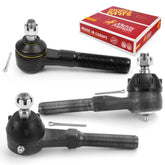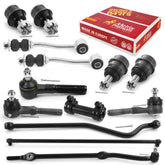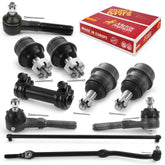Brake Pads or Rotors: When Is It Time to Replace Them?

Your brakes are your car’s most important safety system—there’s no room for guessing when it comes to their condition. If you’ve ever wondered whether it’s time to replace your brake pads or rotors, this guide is for you.
Whether you’re a DIY auto repair enthusiast or a driver looking to understand your car better, knowing the signs of wear and when to act can save you money, time, and most importantly, keep you safe on the road.
What Do Brake Pads and Rotors Do?
- Brake Pads apply pressure and friction to the rotors, which in turn slow down the wheels.
- Brake Rotors (or discs) spin with the wheels and are squeezed by the brake pads to create stopping power.
These two components work together and must be in good condition to ensure responsive braking.
Signs It’s Time to Replace Your Brake Pads
- Squeaking or Screeching Sounds
A high-pitched noise when braking usually means the brake pad wear indicator is doing its job—telling you it’s time for a replacement.
- Grinding Noise
If you hear grinding, your pads may be completely worn, and metal is contacting metal. This can quickly damage the rotors.
- Longer Stopping Distance
If your car isn’t stopping as quickly as it used to, worn pads may be the cause.
- Dashboard Indicator Light
Some vehicles have a warning light to indicate brake pad wear. Don’t ignore it.
- Pad Thickness
Visually inspect your brake pads through the wheel. If they’re less than 1/4 inch thick, they should be replaced.
When Should Rotors Be Replaced?
- Vibration While Braking
A common sign of warped rotors. You’ll feel it in the brake pedal or steering wheel.
- Deep Grooves or Scoring
Visibly uneven surfaces or grooves in the rotor can reduce braking performance and require replacement or resurfacing.
- Blue Discoloration
Excessive heat from hard or frequent braking can cause rotors to overheat and warp.
- Minimum Thickness
Rotors wear down over time. If they fall below the manufacturer’s minimum thickness, they must be replaced for safety.
Should You Replace Pads and Rotors Together?
While not always necessary, replacing both together ensures better braking performance and even wear. If rotors are badly worn, installing new pads on old rotors can reduce the lifespan of your new pads.
Choosing Quality Brake Parts for Peace of Mind
When it’s time to replace your brake components, quality matters. That’s why many drivers and repair professionals choose Metrix Premium Chassis Parts.
Our ceramic and semi-metallic brake pad options, along with precision-matched rotor and pad kits, are engineered for performance, safety, and easy installation.
With direct-to-door shipping, upgrading your brake system is easy—whether you’re doing it yourself or bringing the parts to your trusted mechanic.
Final Thoughts
Brake pads and rotors are wear items, and catching the signs early helps you avoid costly repairs and stay safe on the road. Regular inspection—especially before long trips or season changes—keeps your vehicle in top shape.
Follow us on social media and sign up at our website for notifications about new posts and opportunities.
Previous Article: From Highways To Backroads - Car Care Tips for American Drivers









